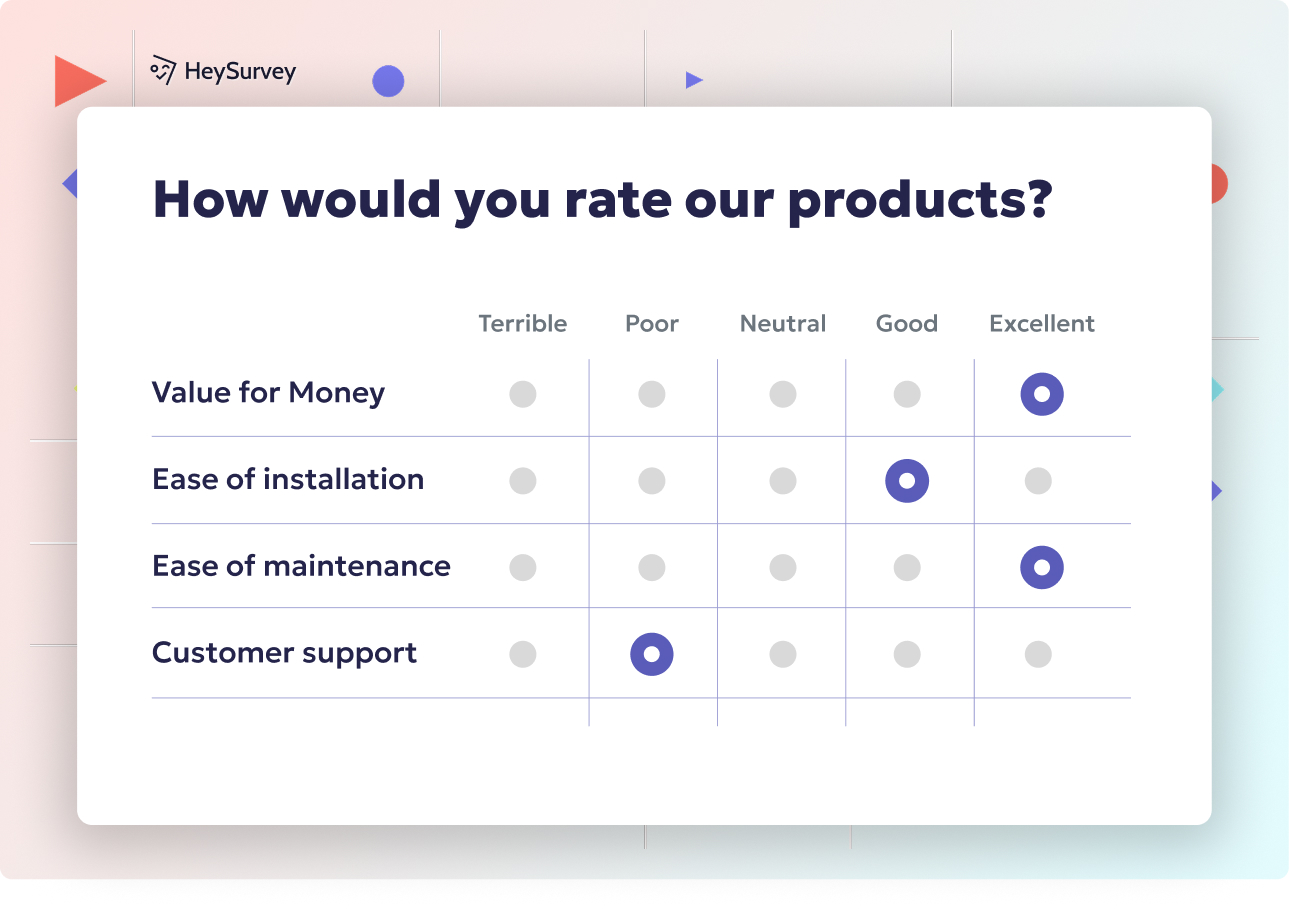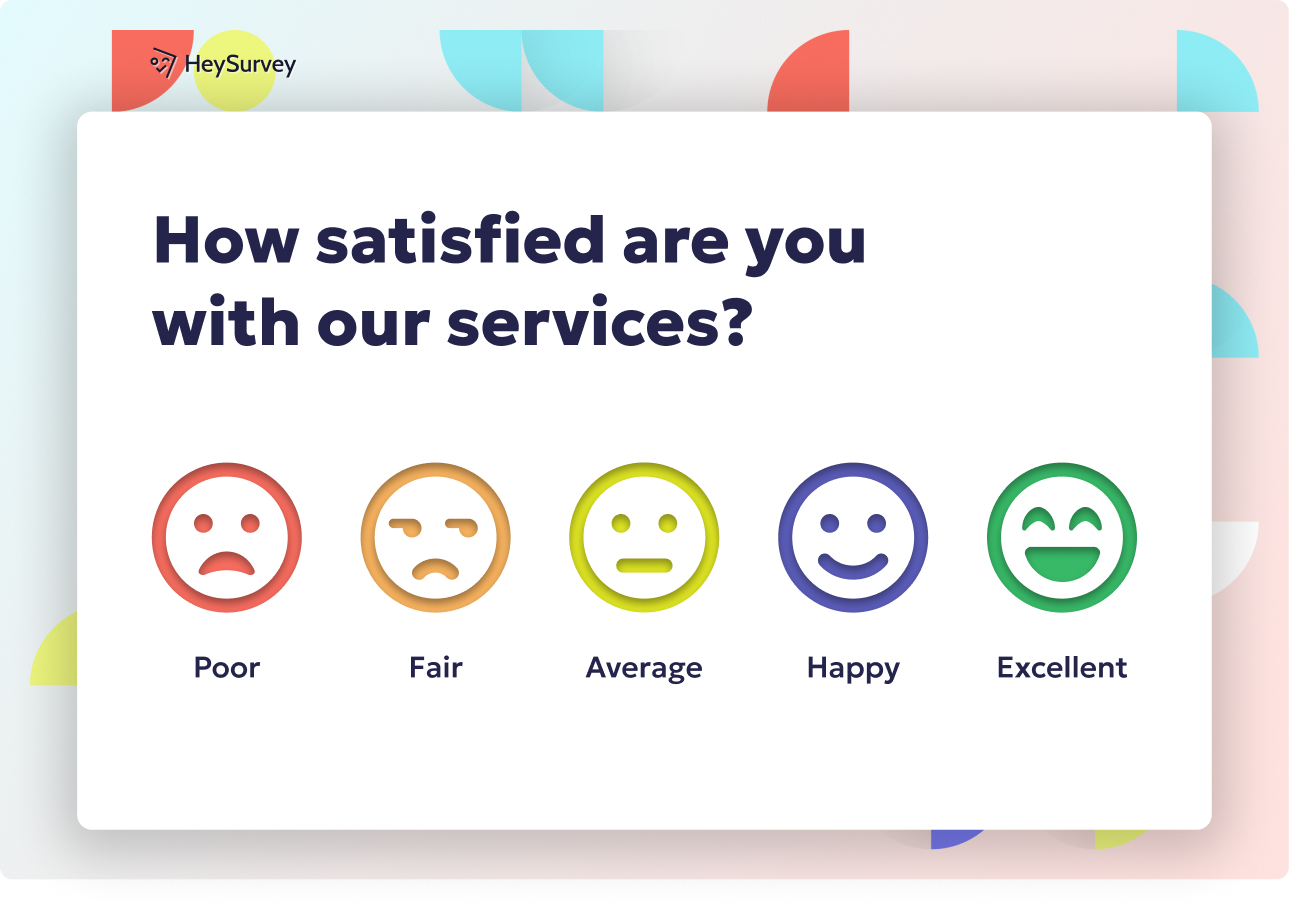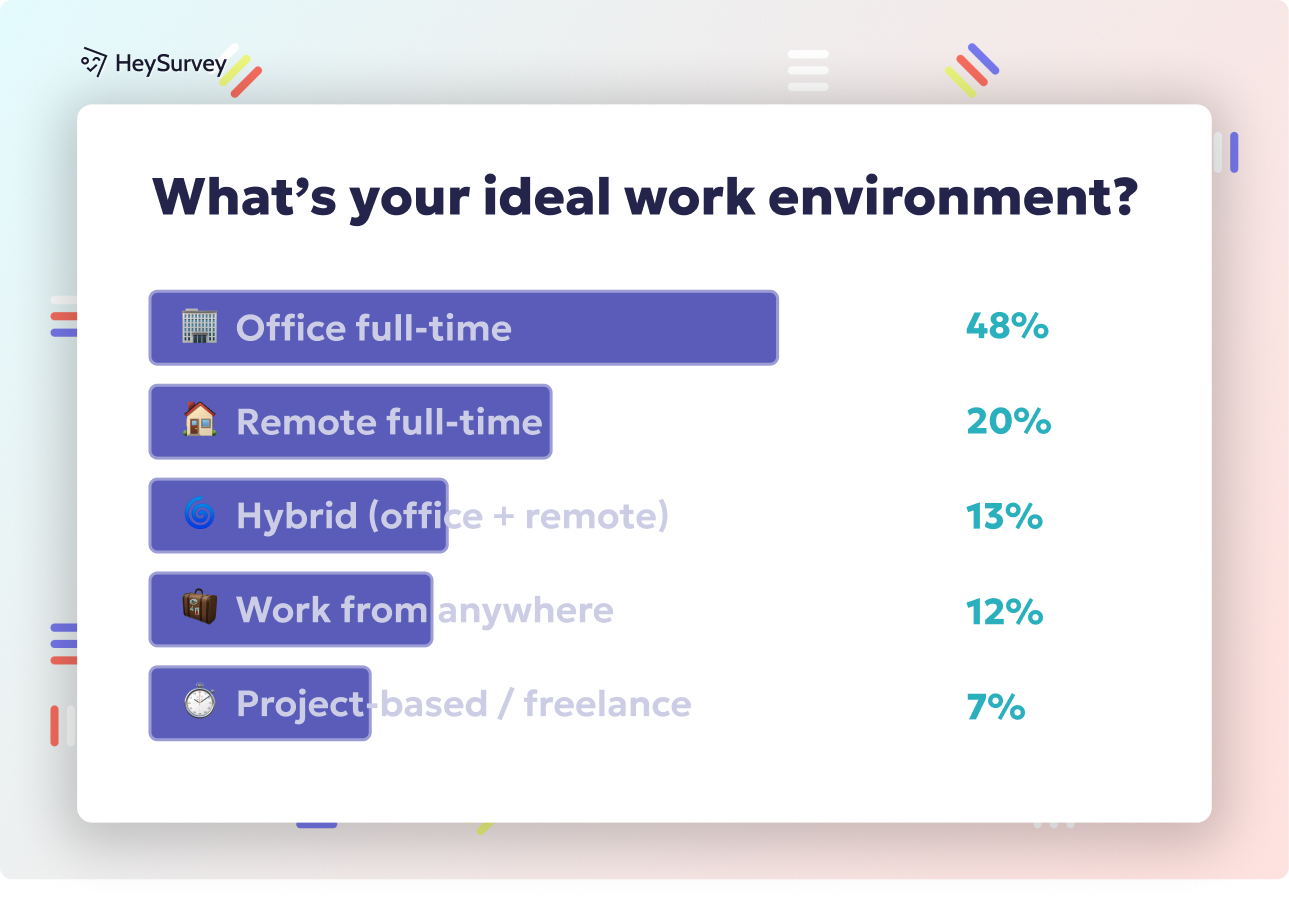29 Bad Survey Questions: Types, Examples & How to Avoid Them
Discover 40+ sample bad survey questions, common survey question mistakes, and expert tips to avoid biased and poorly worded survey questions.
Bad survey questions are everywhere, and they can quietly sabotage your precious data. A “bad” question is one that misleads, confuses, or annoys respondents—threatening the validity of your insights and derailing business decisions. In this article, we’ll unravel eight of the worst offenders lurking in survey design mistakes, from leading and loaded queries to wonky answer options and unbalanced scales. Recognizing and fixing these pitfalls is crucial for higher response rates and truly actionable feedback.
Leading Questions
What Are Leading Questions?
Let’s face it: leading questions sneakily guide your respondents towards a specific answer, whether you mean to or not. A question is “leading” if it suggests the answer you want to hear, instead of letting your audience answer freely. This often results in biased survey questions and distorts the data, making it seem as if everyone loves your product or idea—even if that’s not true.
When respondents sense the question wants a “right” answer, they often comply, consciously or not. This stacks the deck and threatens the credibility of your survey, leaving you with misleading results.
Why and When These Questions Sneak In
Leading wording pitfalls can appear for a variety of reasons, including:
- Researcher confirmation bias: Unintentionally crafting questions that affirm your own beliefs.
- Stakeholder pressure: Influential team members push for questions proving them right.
- Rushed survey timelines: When speed trumps quality, wording gets lazy.
- Sloppy editing habits.
Often, leading questions slip through the cracks until it’s too late—and then you’re left wondering why all your customers seem over-the-moon thrilled.
5 Sample Leading Questions to Avoid
Don’t you agree that our new feature is amazing?
How helpful was the outstanding customer service you received today?
Why is our app the easiest way to manage your money?
How much did you enjoy the seamless checkout process?
How satisfied are you with the superior quality of our product?
If you catch your questions practically begging for praise, it’s time for a rewrite.
Leading questions in surveys can significantly distort data by influencing respondents toward specific answers, resulting in biased and unreliable outcomes. https://www.entropik.io/blogs/the-impact-of-leading-questions-on-consumer-research
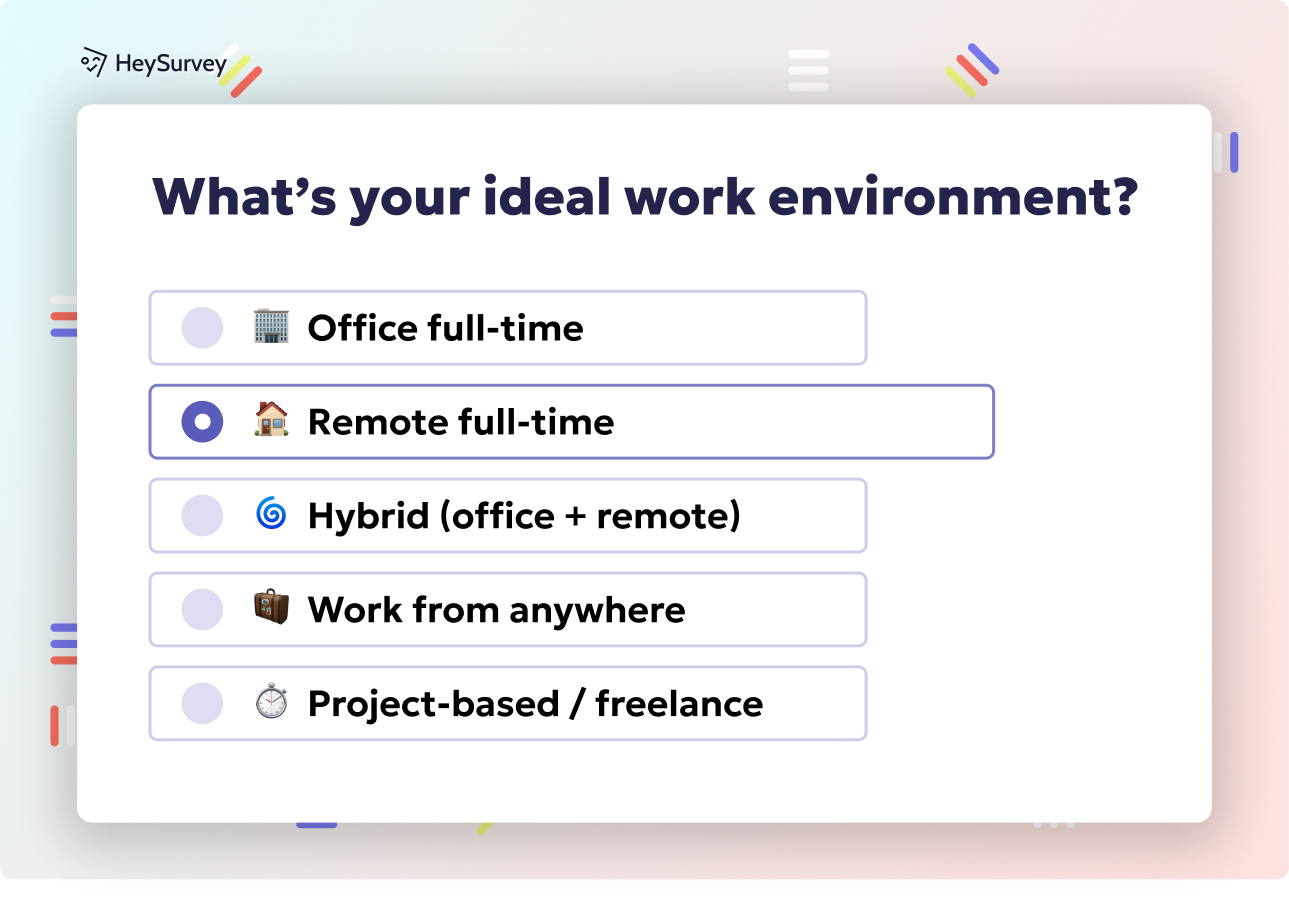
Creating your survey with HeySurvey is a breeze—even if you’re new around here. Just follow these three easy steps to get your survey up and running:
Step 1: Create a New Survey
- Go to HeySurvey’s dashboard and click Create New Survey.
- Choose to start with a blank survey or pick a helpful pre-built template that matches your topic.
- Give your survey a clear name so you can find it later.
Step 2: Add Your Questions
- Click the Add Question button at the top or between existing questions.
- Pick the question type that fits best: text, choice, scale, or others supported by HeySurvey.
- Type in your question text, add a short description if you want, and set any specific options like required answers.
- Continue adding all your questions, making sure to keep them clear and focused (one idea per question!).
Step 3: Preview and Publish Your Survey
- Hit the Preview button to see exactly how your survey will look to respondents.
- Make any last tweaks from the preview mode if needed.
- When ready, click Publish to generate a shareable link for your survey. (Tip: You’ll need a HeySurvey account to publish.)
Bonus Step: Apply Your Branding
- Open the Designer Sidebar and upload your logo to personalize your survey header.
- Choose colors, fonts, and backgrounds that match your style or business look and feel.
- Add animations or layout tweaks to keep your respondents engaged.
Bonus Step: Define Settings
- Use the Settings Panel to set start and end dates for your survey availability.
- Limit the number of responses if you want to cap participation.
- Enter a redirect URL to send respondents somewhere special after they complete the survey.
- Decide if respondents can view results after submission.
Bonus Step: Set Up Branching
- Use HeySurvey’s branching feature to customize question paths based on answers.
- Define different survey endings with unique messages or images depending on how people respond.
- This keeps your survey relevant and engaging by skipping unnecessary questions.
Ready to start? Hit the button below to open a template and dive into building your awesome survey with HeySurvey!
Loaded or Emotional Questions
What Are Loaded Questions?
Loaded questions use emotionally charged language to sway respondents. They tug at feelings and values, subtly nudging answers in a desired direction. Loaded or emotionally weighted survey questions stack the deck by making one answer seem moral, smart, or safe—and another look bad.
Respondents may answer not with their true feelings, but with what seems socially acceptable or “right.” This results in poorly worded survey questions that yield unreliable, agenda-driven data.
Why and When They Surface
Agenda-driven surveys, advocacy groups, and even poorly edited commercial surveys are guilty of injecting extra emotion. Here’s how:
- Advocacy and activism: Questions are written to prove a point.
- Poor survey editing: Overly dramatic language slips past reviewers.
- Biased intentions: The survey has a specific outcome in mind from the start.
These types of survey design errors crop up when researchers can’t resist pushing a narrative or when the survey becomes a platform for opinions, not discovery.
5 Sample Loaded Questions to Avoid
Do you support the irresponsible practice of plastic bag usage?
Should honest taxpayers fund lavish corporate bailouts?
How concerned are you about the dangerous 5G radiation in your neighborhood?
Do you favor protecting innocent wildlife by banning hunting?
How outraged are you by rising tuition costs?
Loaded questions like these will drown your insights in a wave of bias.
Loaded survey questions, which use emotionally charged language, can lead to inaccurate data by influencing respondents to provide responses that may not reflect their true thoughts, feelings, or behaviors. (entropik.io)
Double-Barreled Questions
Why Double-Barreled Questions Are So Sneaky
Sometimes, survey designers try to do too much with a single question, accidentally asking about two (or more) things at once. This is called a double-barreled question. The problem? You can’t tell which part the response actually refers to, making your data as clear as mud.
Instead of getting sharp, actionable answers, you’re left guessing—which issue did they love or hate? Double-barreled questions reward multitasking, but punish your insights.
Why and When They Happen
Double-barreled questions often creep in due to:
- Tight survey space: Trying to cram too much into too little space.
- Mixed-up concepts: Assuming related ideas always belong together.
- Skipping questionnaire reviews: Nobody caught the tangled wording.
- Overzealous “efficiency” in survey design.
If your question contains “and” or “or,” that’s your clue to pause.
5 Sample Double-Barreled Questions to Avoid
How satisfied are you with our pricing and customer support?
Rate the clarity and usefulness of this tutorial.
How often do you read and share our blog posts?
Was the delivery timely and the packaging secure?
How well does the manager communicate and motivate the team?
Break them apart! Each question should only tackle one thing at a time.
Ambiguous or Vague Questions
What’s Wrong With Ambiguity in Surveys?
When survey questions use unclear phrases, fuzzy criteria, or insider lingo, you’ll end up with responses that are all over the map. Terms like “regularly,” “often,” or even “quality” are interpreted differently by everyone—making your results utterly inconsistent.
Ambiguous or vague questions make it impossible to compare responses. If your team can’t agree on what the question means, neither will your respondents.
Why and When They Occur
Why do designers fall into the vagueness trap?
- Drafting in a hurry: Clarity gives way to speed.
- Skipping pilot tests: The question sounded clear in your head!
- Using insider jargon: You forget readers aren’t as close to your product or process.
Ambiguous questions often pass unnoticed until the answers leave you scratching your head.
5 Sample Ambiguous Questions to Avoid
How often do you exercise regularly?
Do you use our software frequently?
Rate our product quality.
Is the training material sufficient?
Do you believe management communicates well?
Specific, crystal-clear questions deliver the most useful data.
Ambiguous survey questions lead to inconsistent responses, misinterpretation, and reduced data reliability, compromising the validity of survey results. (pubmed.ncbi.nlm.nih.gov)
Absolute Questions (Always/Never)
What Are Absolute Questions and Why Are They a Problem?
Nothing sparks disagreement like absolute statements. Absolute questions use rigid words like “always” or “never,” pushing responses to extremes. These questions fail because very few behaviors or opinions fit neatly into such black-and-white categories.
Absolute questions inflate disagreement, frustrate honesty, and make your survey seem judgmental or out-of-touch. Plus, nobody likes to admit they “never” snack after dark.
Why and When They Appear
Absolute questions rear their rigid heads because:
- Demand for yes/no clarity: Short answers seem simple, but oversimplify real life.
- Dashboard-friendly data: Binary results can be graphed quickly, but mask nuance.
- A genuine misunderstanding of how messy human behavior is.
If your question sounds like an ultimatum, it’s time to loosen up.
5 Sample Absolute Questions to Avoid
Do you always pay your credit card balance in full?
Have you never missed a deadline at work?
Do you always recycle?
Do you never snack after dinner?
Have you always been satisfied with our service?
Allow for the messy, sometimes/occasionally/maybe answers of real life!
Non-Exhaustive or Non-Mutually Exclusive Answer Options
Why Answer Choices Matter
Poorly designed answer options can wreck a survey, even if the question is flawless. Non-exhaustive options leave out possible answers, and non-mutually exclusive options overlap, confusing everyone. You want every respondent to see one—and only one—answer that truly fits.
Broken answer sets force people to pick a “best fit” that isn’t accurate, resulting in jumbled, unreliable data.
Why and When They Emerge
Here’s why your answer choices can go off the rails:
- Copy-paste from old surveys: Forgetting to tailor for your audience.
- Sloppy branching logic: Options only make sense on paper or in code, not for real humans.
- Cultural blind spots: Missing out on important segments or regional choices.
- Not reviewing your answers in context.
A check for overlaps and missing options is a must before launch.
5 Sample Questions Illustrating the Problem
Age ranges: 18-25, 25-35, 35-45, 45+
Income brackets: <20K, 20-40K, 40-60K, 60-80K, 80K+
Frequency: Never, Rarely, Sometimes, Often, Frequently, Always
Region: North, South, West
Device used: Mobile, Tablet
Every question should offer a spot-on answer for every respondent, every time.
Scale Bias & Unbalanced Rating Scales
How Unbalanced Scales Distort Your Data
When it comes to rating questions, the balance of your scale is everything. An unbalanced scale—like stacking four positives against one negative—pushes respondents to artificially higher (or lower) answers than they would naturally pick. Skewed scales inflate your scores and undercut honest feedback.
Scale bias creeps in when designers think a little positivity will juice the results, but in reality, it just scrambles your insights.
Why and When They Slip Through
Unbalanced rating scales pop up in surveys thanks to:
- Intentional inflation: Stakeholders want glowing numbers for presentations.
- Misunderstandings: Not everyone knows how to design a balanced Likert scale.
- Translation errors: When international surveys go awry.
- Poor quality checks before the survey goes live.
Any scale should allow for the true spread of opinion, not just what you wish to hear.
5 Sample Unbalanced Scale Questions to Avoid
Rate our service: Exceptional, Very Good, Good, Fair, N/A.
How satisfied are you? Extremely, Quite, Somewhat, Not very.
Speed of website: Super-Fast, Very Fast, Fast, Slow.
Customer support: World-Class, Excellent, Great, Average, Prefer not to say.
Product value: Excellent, Very Good, Good, Poor.
Aim for even, symmetrical scales with a neutral midpoint for the clearest results.
Hypothetical or Hard-to-Recall Questions
Why Hypothetical or Recall Questions Are Risky
Some survey questions demand psychic powers or a photographic memory—neither are fair requests. Hypothetical questions ask respondents to predict the future, while recall questions expect precise memory of the distant past. Both types produce wild guesses, not actionable insight.
People are notoriously bad at predicting their own behavior, especially far into the future. And very few can accurately remember specifics from last week, let alone last year.
Why and When They’re Asked
These problematic questions appear when:
- Trying to forecast demand: You want to know what people will do, not just what they did.
- Lack of behavioral data: Choosing to ask people instead of collecting real usage stats.
- Curiosity overrides practicality: Fun to ask, but rarely deliver useful data.
- Ignoring the limits of human recall and imagination.
When in doubt, ask about a recent, concrete behavior instead.
5 Sample Problem Questions to Avoid
How many cups of coffee will you drink next month?
If gasoline prices double, how would you commute?
Recall every website you visited last week.
Estimate your total online spending in the past year.
How likely are you to buy a self-driving car in ten years?
If your question reads like a pop quiz or an exercise in science fiction, it’s time to rework it.
Best Practices & Dos and Don’ts for Writing Good Survey Questions
What Really Works in Survey Design
Writing good survey questions takes practice and care. The best surveys gather opinions clearly, honestly, and without bias. Here’s how to sidestep “bad survey questions” and avoid common survey design errors.
- Pilot test everything: Try your survey on a small group first to catch confusion.
- Use neutral, clear language: Keep your wording simple and direct.
- One idea per question: Don’t bundle multiple thoughts together.
- Balanced and exhaustive answers: Make sure all possible responses are covered, evenly.
- Randomize answer order: Protect results from order bias.
- Cognitive interviewing: Ask real users what they think your questions mean.
A Handy Dos and Don’ts Checklist
Do keep language simple and direct.
Do randomize option order where it makes sense.
Do use balanced rating scales with neutral midpoints.
Do review questions with your target audience.
Do run pilot tests and debrief on confusing terminology.
Don’t mix metrics (e.g., satisfaction and likelihood in one scale).
Don’t assume the respondent knows insider terms or company jargon.
Don’t make questions double-barreled or ambiguous.
Don’t force answers when “Not Applicable” is appropriate.
Survey design is both art and science—but with these best practices, your results will shine.
A well-designed survey attracts more respondents, generates better data, and inspires confident decision-making. Every question is a chance to earn honest feedback or introduce sneaky biases. Keep your surveys simple, balanced, and easy to navigate for cleaner, more credible results. If in doubt, always pilot test and ask for outside opinions. The best insights come from the best questions.
Related Question Design Surveys

29 Quantitative Survey Research Questions Example for Success
Explore 25+ quantitative survey research questions example with clear explanations and tips for c...
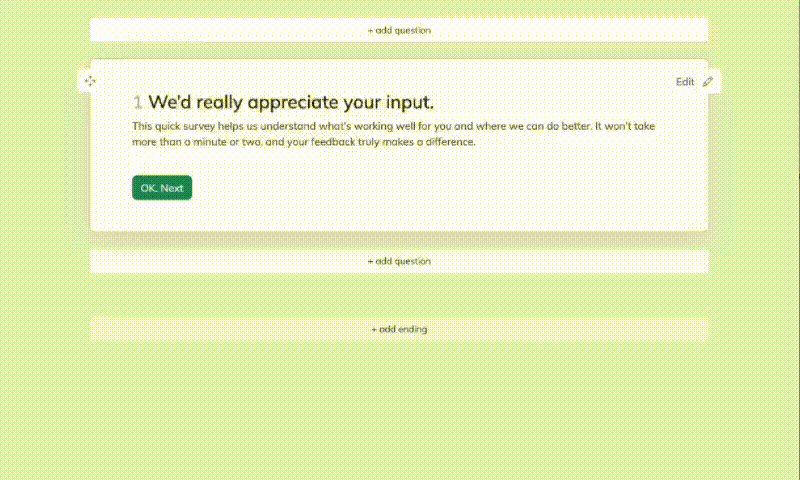
32 Good Survey Question to Boost Your Data Quality
Discover how to craft good survey questions with 30 sample questions across 8 types for better da...
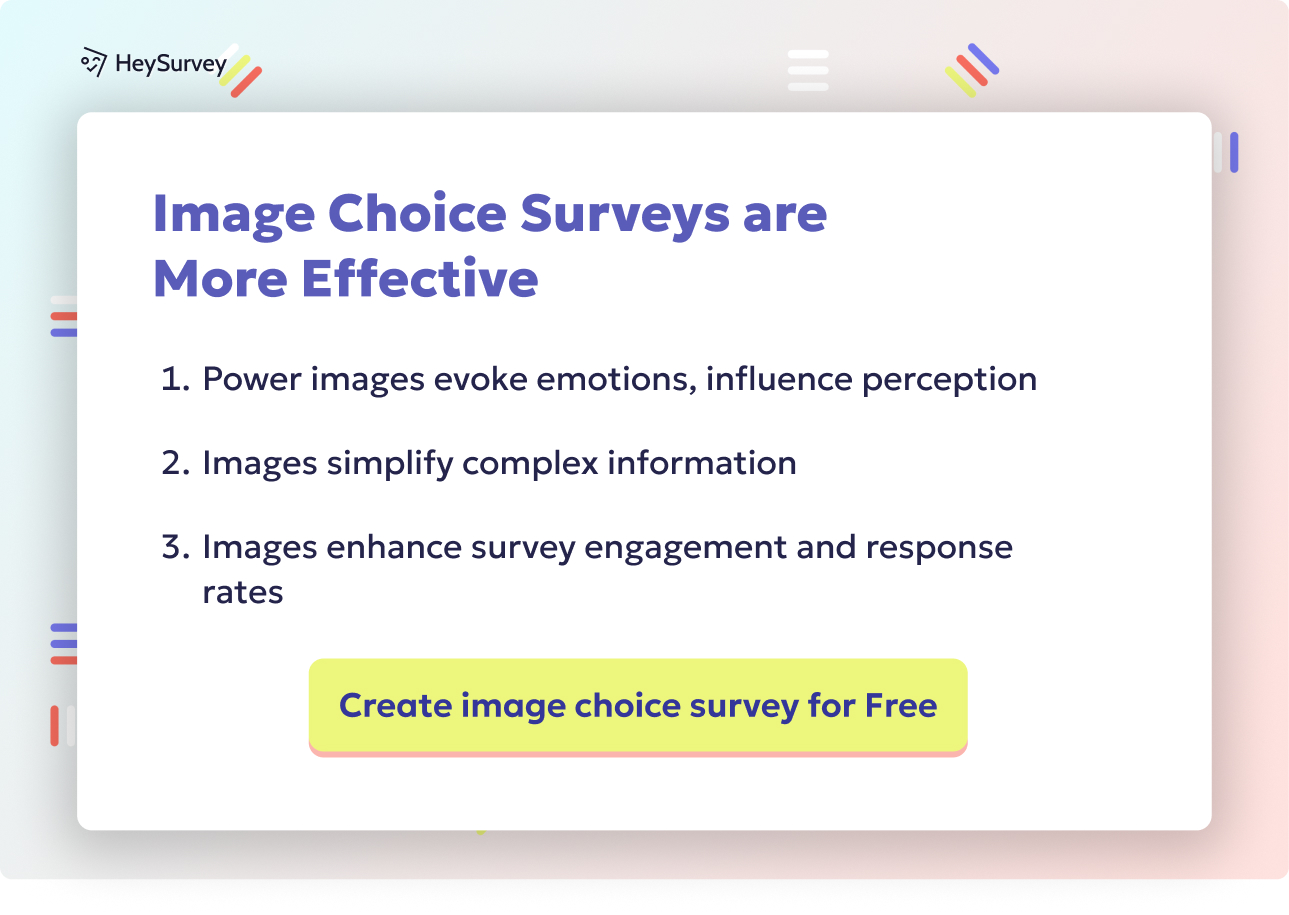
31 Survey Question Mistakes You Need to Avoid Today
Discover 25 common survey questions mistakes with real examples and expert tips to craft clear, u...
